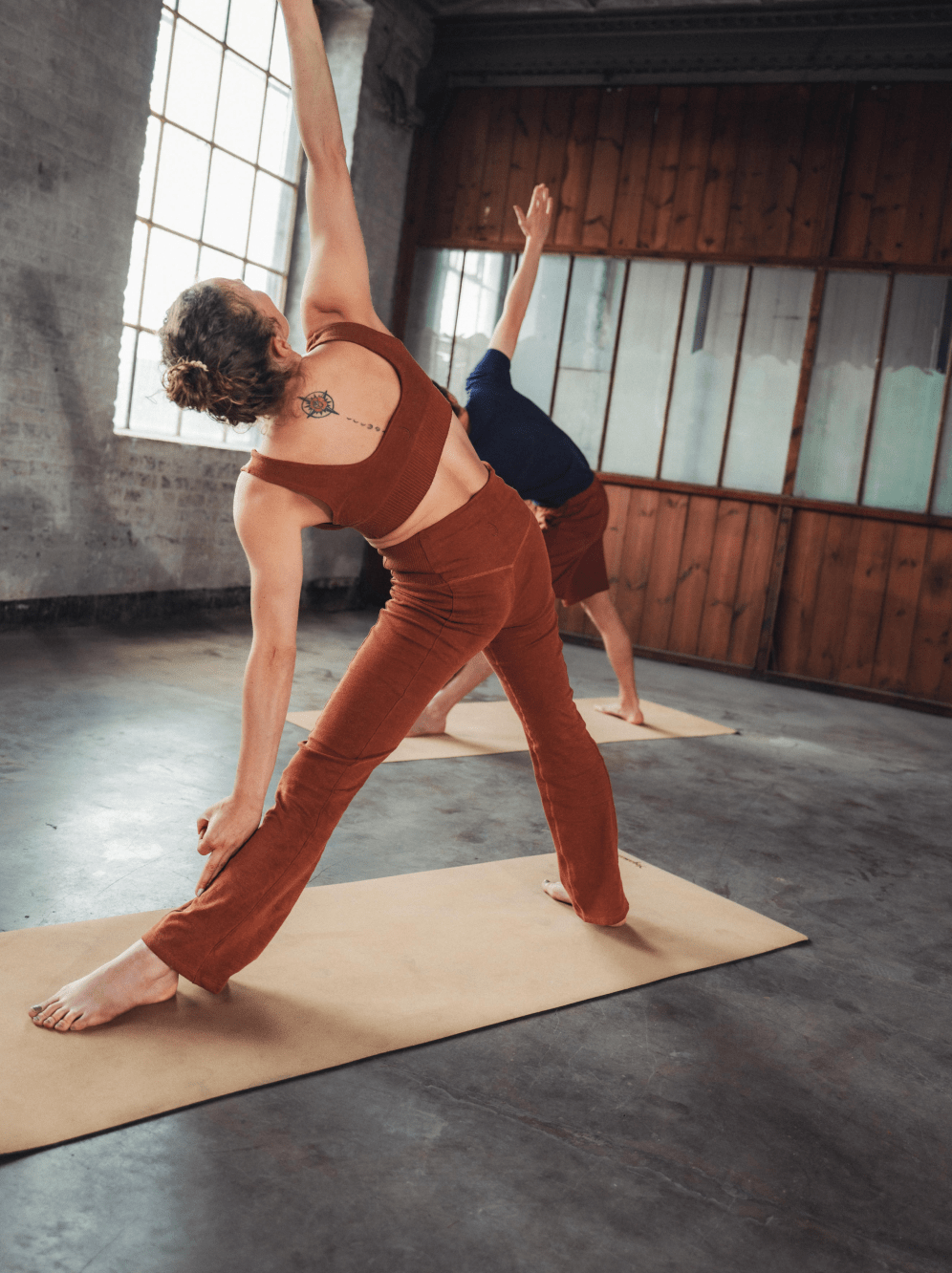Sport is a sector dominated by synthetic materials. Polyester, nylon and other petroleum derivatives are omnipresent in sports equipment, notably for their lightness, elasticity and low production costs. Yet these materials have a considerable environmental impact, with plastic pollution, damage to marine ecosystems and recycling difficulties.
Faced with this reality, more responsible alternatives are beginning to emerge. Among these, linen stands out for its environmental and technical qualities. A natural, robust and breathable material, it could revolutionise the sportswear market. This article explores how linen, whether used in composite form or blended with synthetic fibres, could offer a more sustainable alternative without compromising performance.
The predominance of synthetic fibres in sport
Why is synthetic dominating the market ?
For several decades, synthetic fibres have conquered the sports industry for a number of reasons:
- Lightness and flexibility : they allow great freedom of movement.
- Resistance to moisture : they don’t retain water and dry quickly.
- Low cost : production is mass-produced and optimised.
- Easy care : they can be washed at low temperatures and do not crease.
The environmental impact of synthetic fibres
However, this predominance is not without consequences. The production and use of synthetic textiles are responsible for a major ecological impact :
- Degradation of the oceans : each wash releases microplastics that end up in aquatic ecosystems.
- Dependence on oil : the manufacture of polyester and nylon relies on non-renewable fossil resources.
- Recycling difficulties : many items of sportswear are made up of mixed fibres, making them difficult if not impossible to recycle.
Linen, a sustainable, high-performance alternative
The advantages of linen in sportswear
Linen has a number of natural properties that make it a good choice for sportswear :
- Sturdiness and longevity : its fibre is strong and durable.
- Breathability : it regulates moisture and limits perspiration.
- Thermoregulation : it offers optimum comfort, whatever the temperature.
- Biodegradability : at the end of its life, it does not pollute the environment.
Linen innovations in sport
Linen composites
The use of flax in composite form (flax-resin) is opening up new prospects. Lightweight and highly resistant, flax composites are used in :
- Bicycle frames : some brands are developing frames incorporating flax for greater flexibility and vibration absorption.
- Skis and snowboards : flax replaces fibreglass for improved responsiveness and a reduced ecological footprint.
- Tennis rackets : incorporating flax improves the feel of the game while reducing the use of synthetic fibres.
Linen-synthetic hybrid textiles
Rather than condemning synthetic fibres outright, a hybrid approach seems more realistic. Mixing linen with synthetic fibres produces fabrics that perform better and last longer:
- Reduction of microplastics : a fabric blended with linen limits the release of plastic particles.
- Improved comfort : linen absorbs moisture better and reduces irritation.
- Longer-lasting textiles : linen makes fabrics more resistant.
Photos :
A huge sports market : an opportunity for linen
The sports industry is one of the world’s largest textile markets, with annual sales running into hundreds of billions of euros. The gradual integration of linen into this industry therefore represents a considerable economic and environmental opportunity:
- For the flax industry : developing new outlets and boosting French spinning.
- For consumers : access to healthier, more sustainable products.
- For sports manufacturers : diversifying their product range and anticipating future environmental regulations.
Long ignored in the world of sport, linen is proving to be a credible, high-performance alternative. Used on its own or in combination with synthetic fibres, it can contribute to a more responsible approach to sport.
The challenge remains to convince brands and consumers of the benefits of linen. But with growing demand for more sustainable products and an ever-evolving sports sector, the future of linen in sport looks bright. The days of incompatibility between flax and sport are over.
NB: the image used to highlight this article was generated by IA.

